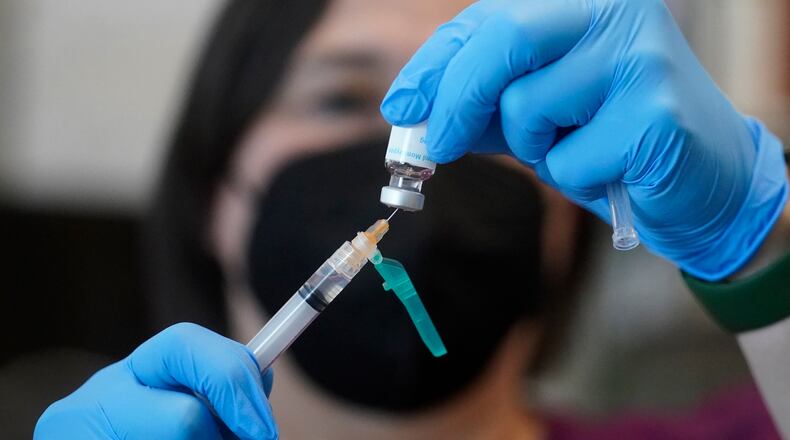Combs said the health district is reminding residents that monkeypox is a rare viral illness that is transmitted from person to person through direct contact with body fluid or monkeypox lesions. Less commonly, transmission can occur through respiratory droplets from prolonged face-to-face contact or from contaminated materials such as bedding or clothing, she said.
Combs declined to provide any additional information about the affected residents. She said the first case a few months ago was tied to a Warren County mailing address, but the person was not living in Ohio at the time they were infected.
The first monkeypox case reported in Ohio was in June 2022, according to the Ohio Department of Health. Since that time, multiple cases have been identified across the state, with most reported in large metropolitan areas.
According to the federal Centers for Disease Control and Prevention, there have been 29,248 confirmed cases and 14 deaths from monkeypox recorded as of Friday.
People with monkeypox in the current outbreak generally report having close, sustained physical contact with other people who have monkeypox.
As of Wednesday, there have been 372 reported monkeypox cases in Ohio, with 155 cases reported in Cuyahoga County in the Cleveland area, according to the state health department. Two people have died from the disease. Monkeypox has afflicted people between the ages of 18 to 69 with more than 95.4% male and just more than 4% female.
Elsewhere the greater Dayton area, there have been four cases reported in Butler County, 13 in Montgomery County, two in Miami County, three in Clark County, and one in Champaign County. Greene and Preble counties have had none, while farther south, there have been 19 cases in Hamilton County, according to the Nov. 23 update from ODH.
Among the symptoms of monkeypox are:
· Rash and lesions that can look like pimples progressing to blisters/pustules that appears on the face, inside the mouth, and on other parts of the body, like the hands, feet, chest, genitals, or anus.
· Fever
· Headache
· Muscle aches and backache
· Swollen lymph nodes
· Chills
· Exhaustion
Young children under the age of 8, children with eczema and other skin conditions, and children and adults with immunocompromising conditions may be at increased risk of severe disease.
The illness may last for up to 2–4 weeks and usually resolves without specific treatment. Monkeypox can be spread from the time symptoms start until all sores have healed and a fresh layer of skin has formed.
The Warren County Health Department recommends anyone experiencing these symptoms to contact their health provider and seek medical attention. Call your primary care doctor or urgent care before arriving in person. Let them know you have symptoms or have had a confirmed exposure. This will allow staff time to prepare for a safe visit for you, them, and other patients.
How to prevent monkeypox:
· Avoid close, skin to skin contact with people who have a rash that looks like monkeypox and/or avoid skin to skin contact with people you do not know. A rash can be under clothing and not obvious to see.
· Do not share eating utensils or cups with a person who has monkeypox or people you do not know.
· Do not handle or touch bedding, towels, or clothing of a person with monkeypox.
· Wash your hands often with soap and water or use an alcohol-based sanitizer.
· Wear a mask if traveling on public transportation, such as long bus or plane rides, three hours or more, near people you do not know - six feet.
· If anyone with a new rash is concerned that it could be caused by the Monkeypox Virus, or if anyone has had close contact with a person with Monkeypox Virus, they should first contact their own healthcare provider for clinical evaluation.
About the Author

